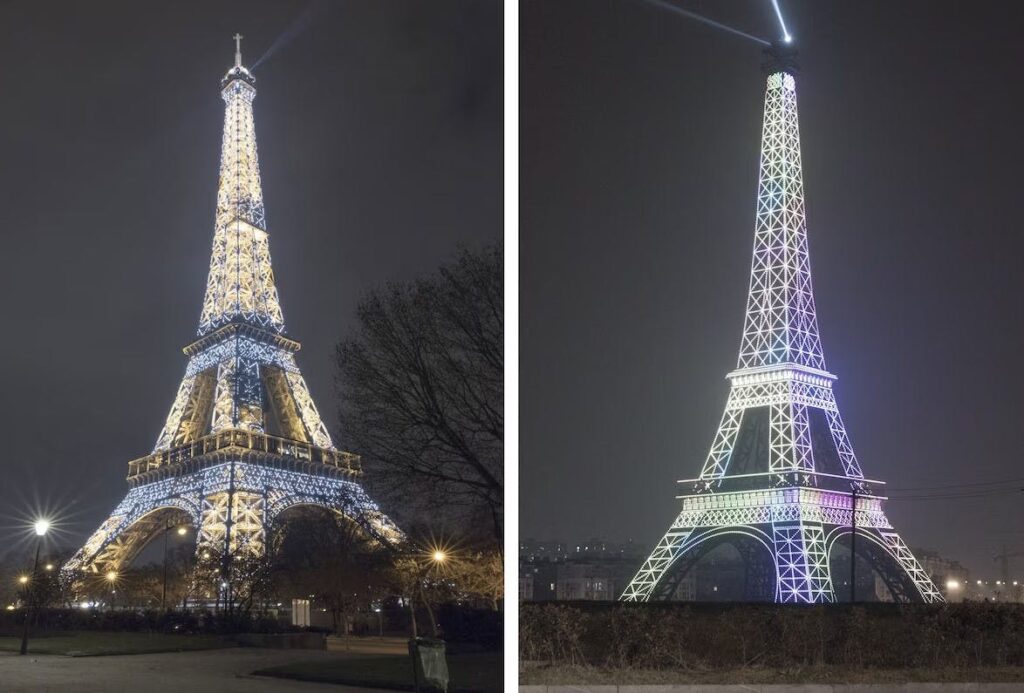EXPLORING THE STORY BEHIND A SPECTACULAR ARCHITECTURAL CLONE
A stroll down the Champs Élysées. Resting beside the Luxembourg Gardens fountain. Gazing up at Gustave Eiffel’s towering namesake. These essential Parisian experiences now await visitors not only in the City of Light, but also in an unlikely duplicate location – China. The city of Tianducheng is Paris in China.
In the eastern city of Hangzhou, a little-known suburban community named Tianducheng has meticulously recreated Parisian landmarks within its walls. But while the uncanny architectural copies pay homage to France, locals inhabit them like any other Chinese town. This fascinating fusion invites a deeper look at Tianducheng’s backstory and daily life inside its European facade.
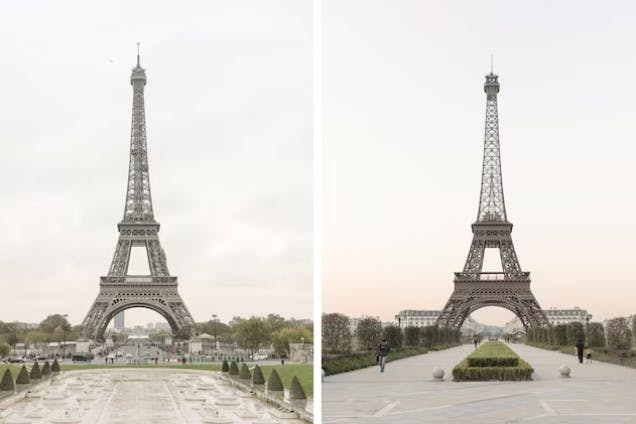
FROM GHOST TOWN TO MINI-METROPOLIS
Our story begins in 2007 when Tianducheng emerged bearing Parisian flourishes. Its centerpiece – a 354-foot imitation of the Eiffel Tower – was joined by a replica Champs Élysées, Arc de Triomphe, classical French buildings and even a fountain from Luxembourg Gardens. The lavish community was conceived as a high-end living area for wealthy Chinese citizens infatuated with Europe.
Yet early on, Tianducheng earned the notorious label of “ghost town.” Despite the opulent design, few residents initially occupied its palatial Paris-style homes. Chinese interest lagged while some superstitious citizens considered the development unlucky. Tianducheng’s vacant streets and eerie silence evoked images of a post-apocalyptic Paris rather than a bustling community.
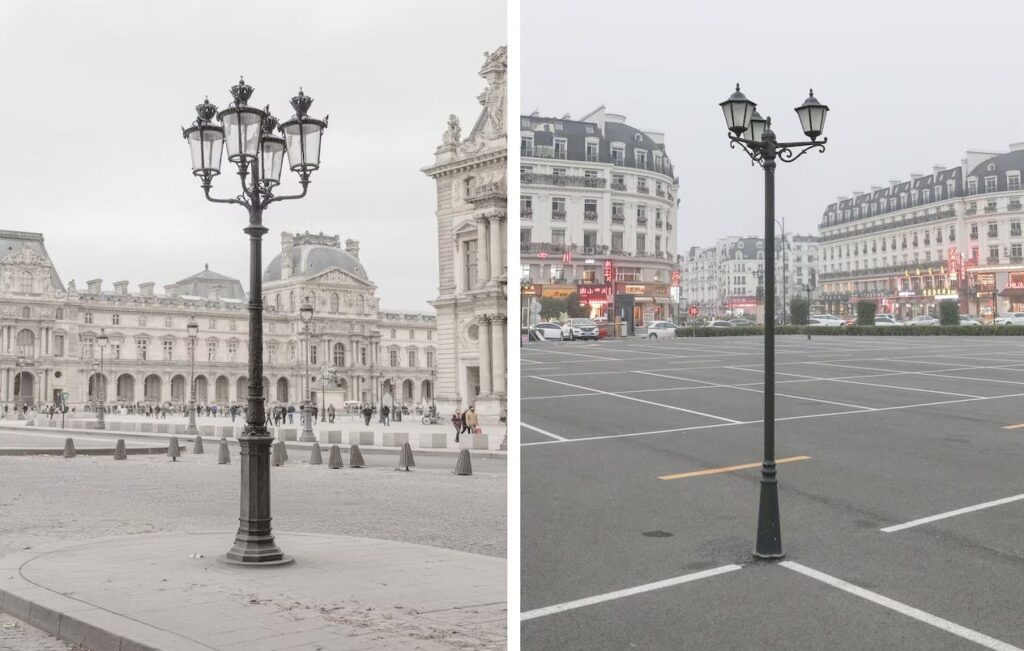
But within several years, modest crowds replaced the emptiness. Lowered prices attracted middle-class buyers plus waves of investors seeking rental income. The 2010 World Expo in Shanghai also sparked interest in Tianducheng, which lies just a quick train ride away.
Today, the Paris in China houses approximately 10,000 occupants – a mix of both owners and short-term tourists. While a few vacant buildings persist, steady streams of visitors now pose for photos along bustling avenues. Even if more spectacle than community, the clone city proved imaginative enough to defy its early woes.
DUPLITECTURE WAVE SWEEPS CHINA
Rather than an oddity, Tianducheng belongs to a Chinese architectural movement dubbed “duplitecture.” Originating in the early 2000s, entirely new towns popped up across China mimicking the urban layouts and iconic buildings of famous Western cities. British, German, Italian and North American designs have all served as creative inspiration.
The phenomenon represents China finally catching up development-wise with global powers after decades of isolation. But it also reflects the Chinese peoplelooking back admiringly toward history and cultures considered more refined than their own. For both practical infrastructure and aspirational status, European imitation thus prevailed.
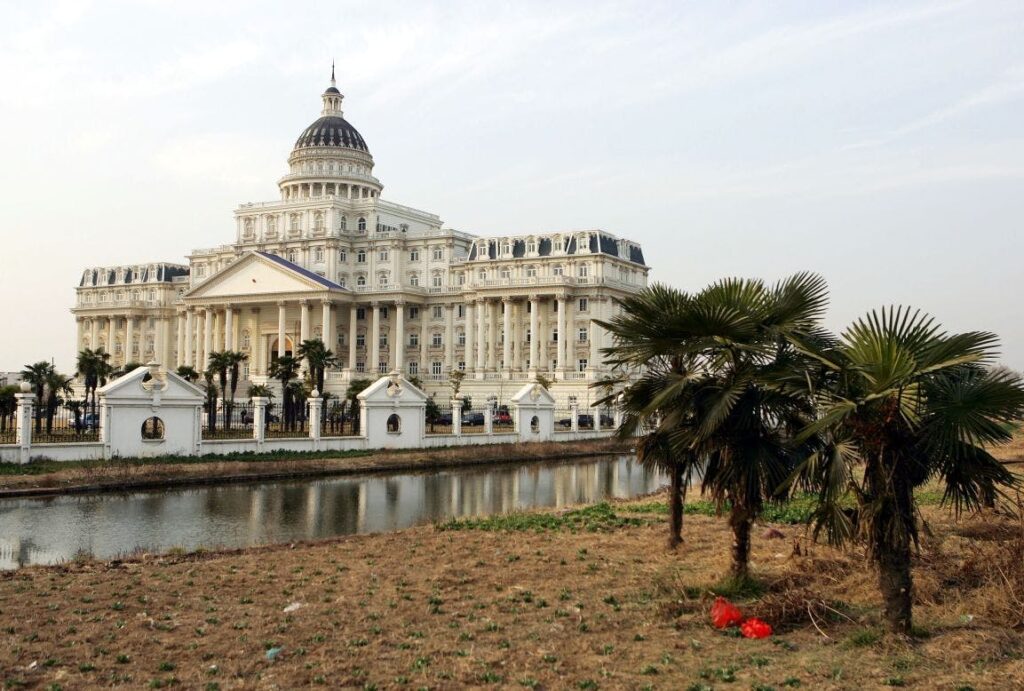
.
At times, the elaborate reproductions in Paris in China approach absurd heights. Fuyang recreated the entire US Capitol building while Songjiang erected a $50 million knockoff of lower Manhattan. More common are districts with names like “Thames Town” hosting a smattering of British motifs. Between the 2008 Beijing Olympics and 2010 Shanghai Expo, hundreds of duplicate communities popped up seemingly overnight.
Yet enthusiasm has waned after concerns about cultural identity erosion arose. The State Council now bans foreign street or district names to preserve Chinese heritage.uildings relying too heavily on classic Western aesthetics also face greater scrutiny. Still, existing duplitecture complexes remain active while nodding appreciatively toward outside architectural innovation.
BEHIND THE PARISIAN FACADE
Photographer François Prost relished the chance to compare an ersatz version of his Paris home versus the real thing. Arriving in Tianducheng, he found the sheer verisimilitude uncanny yet impressive. Streets perfectly mimicked the Left Bank’s rhythm and scale while iconic monuments matched nearly every dimension.
“The first thing I saw was the Eiffel Tower and it looked quite impressive,” Prost recalled about entering the district. He admired Chinese architects for accurately reproducing structures embodying French pride so many thousands of miles away. The imitation game was clearly on point.
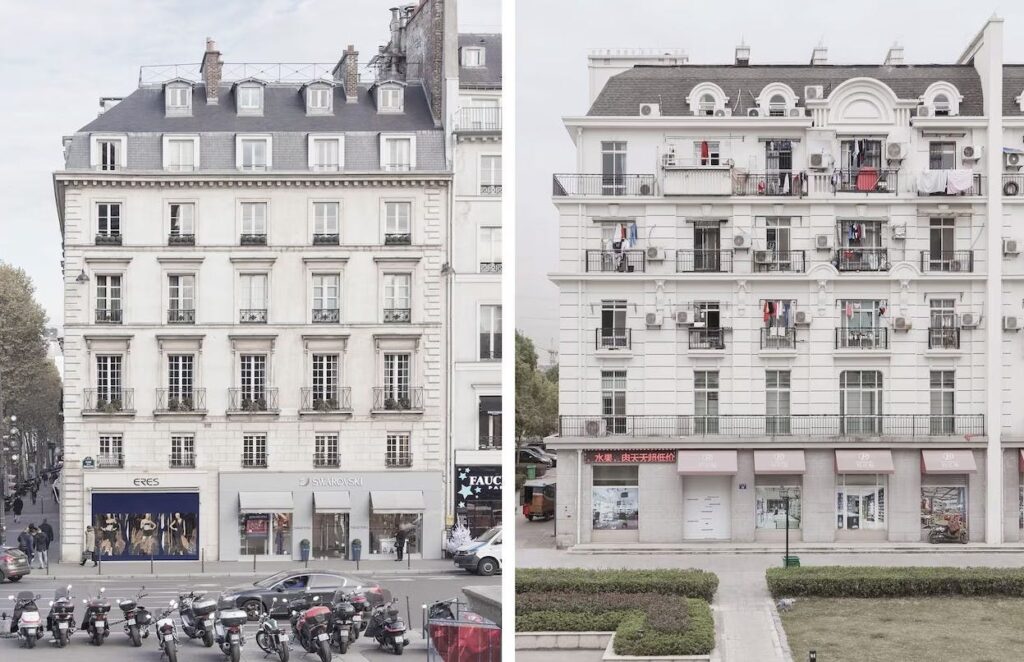
Yet strolling the grounds, Oddities stood out to a native Parisian’s eye: the clean facades and intersections not yet weathered by time; the absence of bustling crowds jockeying along narrow sidewalks. According to Prost, Tianducheng’s orderly emptiness carried a museum-like quality, almost too precise compared to Paris’s lively chaos.
But peering deeper inside this “duplitecture” complex, Prost discovered authentic community bonding that transcended any superficial similarities. Tianducheng was no tourist carnival like Las Vegas or Disneyland; it housed real Chinese families following daily routines like anywhere else. Beyond the European frills lay the genuine vibe of young couples starting out, elderly folks relaxing and workers grabbing lunch breaks.
However much the fake Eiffel Tower initially impressed, conversing with everyday residents left Prost certain that people – not ornate replicas – define a place. The Parisian touches were merely decorative wrapping on a typical Chinese provinicial town.
His photo project comparing sites back home against their twins in Tianducheng underscored this revelation. As a montage, the images connect across cultures more via embedded cultural values than appearances. Just like twin siblings, environment and genetics interact to shape identity – and nurture always overrides nature in the end.
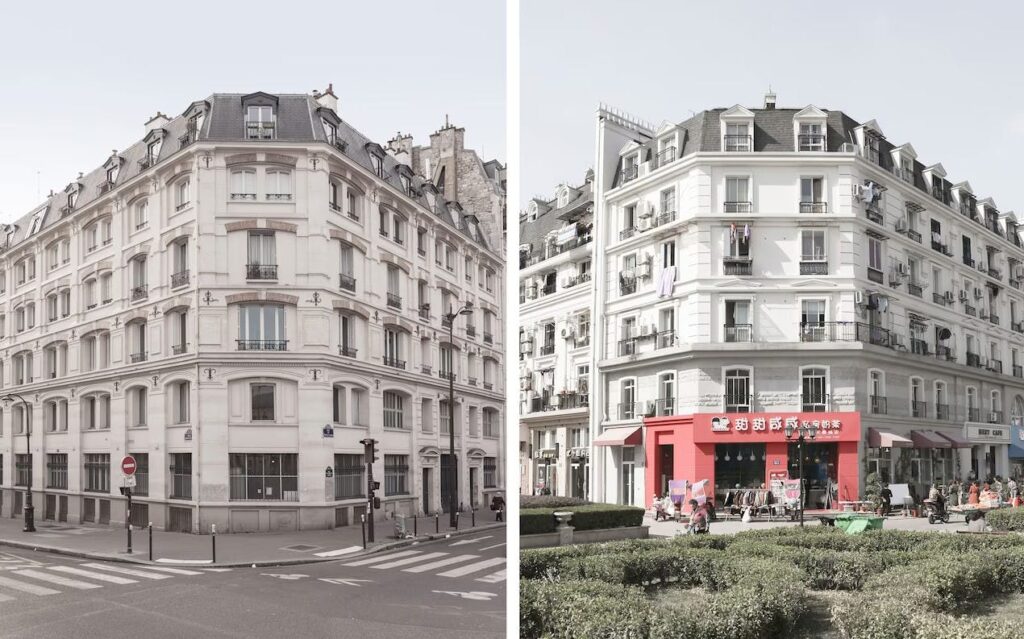
PARIS IN CHINA: THE SOUL BEHIND THE SCENES
In many ways, Tianducheng represents the postmodern fragmentation of truth – the hyperreal that often seems more valid than reality. Yet peering inside its copying illusion reveals that shared destiny still connects global citizens occupying even the most fantastical facades.
Because seeing Tianducheng only for its shimmering exterior risks the same pitfall as honoring image above inner wisdom. There exists a human story worth telling for every far-flung settlement – about creativity and limitations, triumphs and growing pains.
Like the impressionist painters who once jarred Paris’ artistic sensibilities by capturing emotional truth over perfect form, visiting replica locales demands focusing attention on soul over style or sheen alone. Only by valuing cultural spirit can we appreciate the genuine bonds holding communities together, no matter how superficially different.
